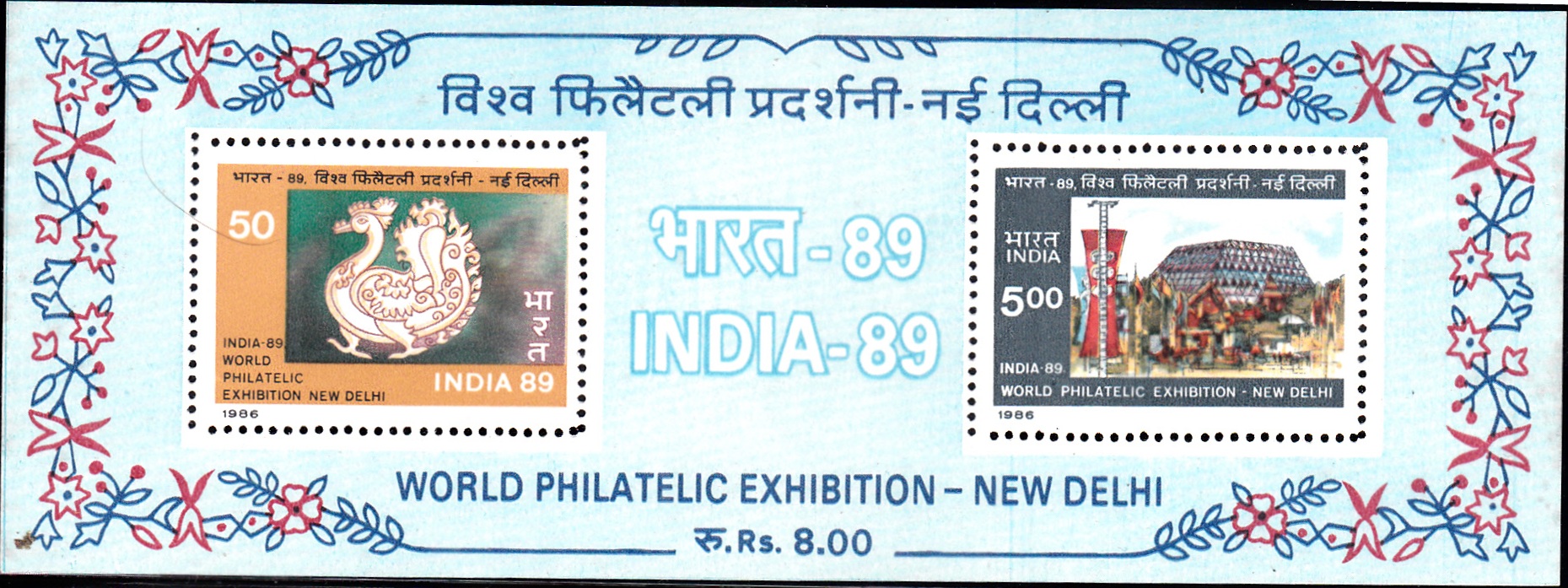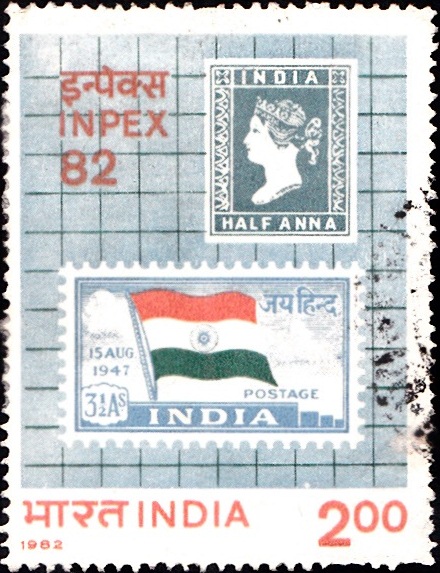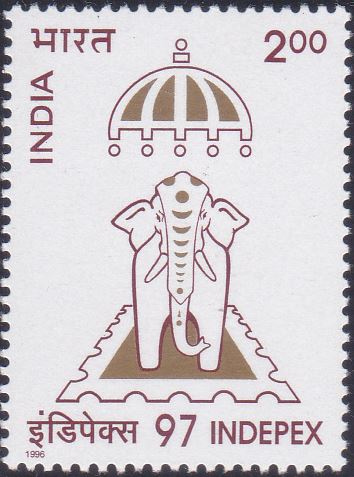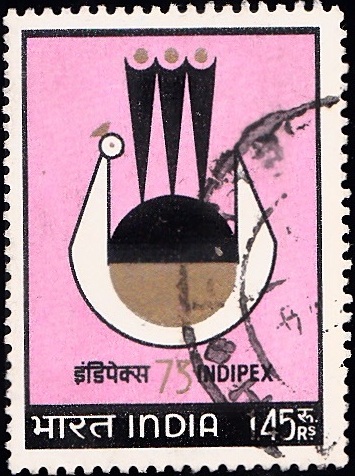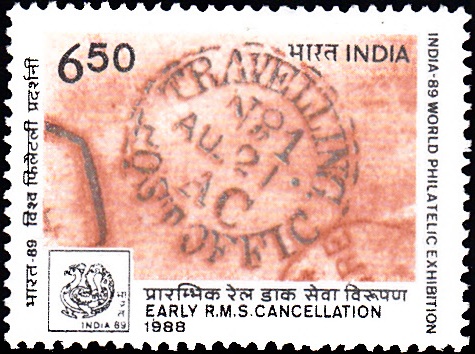
Early D.L.O. and R.M.S. Cancellation
Complete Set of 2 nos of postage stamps on the ‘India–89′, World Philatelic Exhibition :
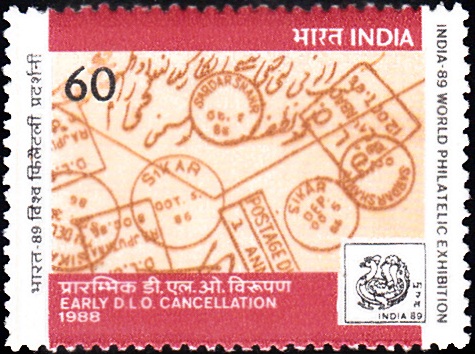
 Issued by India
Issued by India
Issued on Dec 20, 1988
Type : Stamps, Mint Condition
Colour : Multicolour
Denomination : 60 & 650 Paise
Overall Size : 3.91 x 2.90 cms.
Printing Size : 3.55 x 2.54 cms.
Perforation : 13 x 13
Paper : Imported unwatermarked Adhesive gravure coated stamp paper
Number Printed : 15,00,000 each
Number per issue sheet : 6 Sheetlet
Printing Process : Photogravure
Printed : India Security Press
About :
- As a prelude to INDIA-89, World Philatelic Exhibition, the Department of Posts has been issuing a series of stamps. This, the fourth set, carries two cancellations, one of the RMS and the other of the DLO.
- The Indian postal system is one of the largest in the world. In the nineteenth century, the geographical area covered by the system was very much larger. It included undivided India and Burma and also certain out-posts of the British Empire like Aden, Singapore and Shangai where Indian stamps were used. This, along with the multifarious activities undertaken by the system itself, made a study of Indian postal history interesting as well as instructive for a philatelist specialising in postal history collections. Postal history is the study of routes, rates and markings. The markings are by far the most colourful aspect of such collections. It is, therefore, appropriate that postal cancellations are chosen as the subject for this set of stamps.
- The first stamp depicts one of the earliest hand stamps of the travelling post office in the ‘Allahabad–Cawnpore‘ railway sector and this post mark was in use from December, 1864 to 1869. It was used by the travelling sorting offices between these two places. The first Travelling Post Office was established on 1st May, 1864 under a Superintendent at Allahabad. The TPO operated on the ‘Allahabad–Cawnpore‘ and Calcutta Delhi railway sector. The circular post mark shown on the stamp has a diameter of 25 to 26 mms with “TRAVELLING” along the upper rim of the circumference and “POST OFFICE” along the lower rim, with No. 1 of the set, date and ‘AC’ in three horizontal lines in the space within the circle. This cancellation was used by the 1st set of the experimental TPO on 21st August, 1864.
- The second stamp depicts the type of cancellation used by the Dead Letter Offices in 1886. The origin of Dead Letter Offices can be traced to the Act of 1837 which prescribed the treatment of undelivered letters lying at any post office for longer than three months. Initially these were sent to the GPO of the Presidency and lists of such undelivered letters and parcels were published in the official Gazette. They remained at the GPO for 18 months and, after a further period of 12 months, they were destroyed.
- The Dead Letter Offices were established somewhere in 1860s but it was only towards the end of the decade that actual markings were used on envelopes and other postal material. The marking depicted on the reverse of the envelope is a square of 18 mm and has the words D.L.O., the post office and the date in three horizontal lines in the space within the square.
- Material for text, courtesy Shri G.B. Pai, Col. L.G. Shenoi and the India-80 catalogue.
Subscribe
Login
0 Comments



